Take a peek at the lunar surface and check out plentiful planets and moons from June 2 to 9.
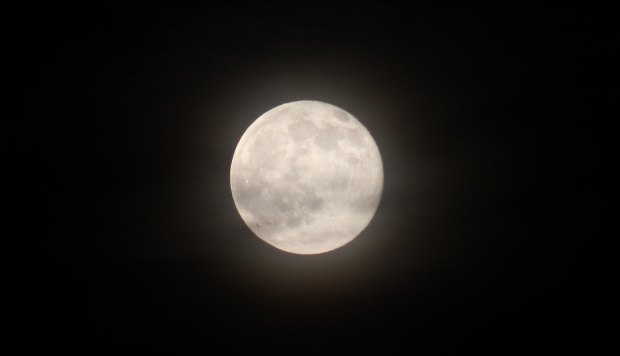
Friday, June 2Look west shortly after sunset tonight and you’ll find Mars stealing the show high above the horizon. The Red Planet sits perfectly nestled among the glittering stars of the Beehive Cluster (M44) in the central regions of Cancer the Crab. The magnitude 3.7 cluster is readily visible to the nɑƙeɗ eye as a grayish-white fuzzy patch once the sky grows dark, with one brighter, ruddy point of light that is magnitude 1.6 Mars.
Because the cluster is so large — it has an apparent diameter of just over 1.5° — you’ll want to opt for lower magnifications to catch its myriad stars and the planet currently visiting them. Binoculars, a small scope, or even your finder scope are all great choices. Mars currently stands roughly 2 astronomical units from Earth (1 astronomical unit, or AU, is the average Earth-Sun distance). The planet’s disk is 5″ across — it will likely appear as a small circle rather than a pinpoint of light like the stars scattered behind it. Far beyond the solar system, M44 lies nearly 600 light-years away. Based on its age, distance, and motion through the galaxy, astronomers suspect the Beehive and the Hyades in Taurus, now rising with the Sun and invisible in the daytime sky, may have a common origin some 700 to 800 million years ago.
This pairing will make a great target for astrophotography, as even a relatively short exposure should net you a great view. Mars will remain among the Beehive’s stars for at least another night as the planet moves slowly east along the ecliptic. Brilliant Venus, which tonight is an unmissable evening star at the border of Gemini and Cancer (currently to Mars’ west, or lower right), is also moving east and will make its own visit to the Beehive later this month.
Sunrise: 5:33 A.M.Sunset: 8:23 P.M.Moonrise: 7:11 P.M.Moonset: 4:14 A.M.Moon Phase: Waxing gibbous (97%)*Times for sunrise, sunset, moonrise, and moonset are given in local time from 40° N 90° W. The Moon’s illumination is given at 12 P.M. local time from the same location.
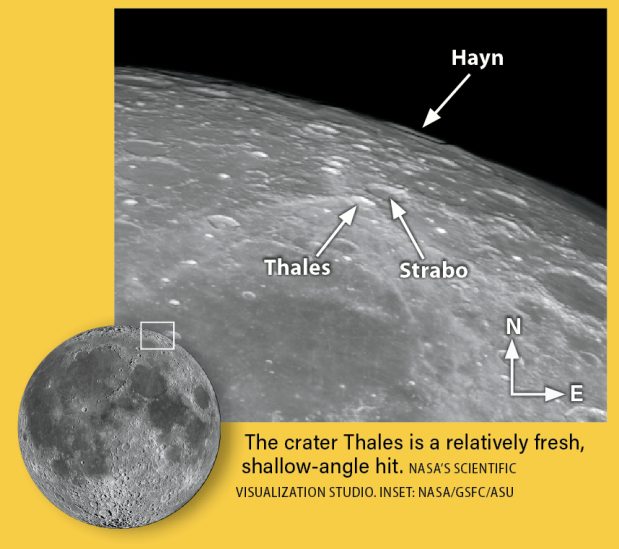
Saturday, June 3Full Moon occurs late tonight at 11:42 P.M. EDT. The June Full Moon is also called the Strawberry Moon, as it occurs around the time these berries are ripe and ready to pick in North America. Instead of pink, though, you may instead notice a slight yellowish cast to Luna tonight, as it follows the lowest path in the sky it will take this year.
Given that the blazing Full Moon will definitely steal the show, let’s put our focus there. Viewing the Full Moon with a telescope can be quite bright, but there are a few tricks you can use to keep your eyes from watering! Opt for higher magnification, which will reduce your telescope’s field of view and let less light through. Or, you can even wear sunglasses as you peep through the eyepiece. Dedicated Moon filters can also make observing Earth’s satellite more comfortable and bring out subtle detail.
Once you’ve got the Moon in your sights, aim for the northeastern rim. Here you’ll find the young crater Thales — young in comsic terms, at least! A few hundred million years old, this pockmark features a V-shaped fan of debris spreading southwestward, hinting at the shallow angle of the hit that created it. Keep looking toward the lunar limb to see if you can spot Hayn on the far edge, nearly in profile. Scanning this region in general will show a stunning, almost 3D view of our satellite as shallow shadows cross the rugged landscape.
Sunrise: 5:33 A.M.Sunset: 8:24 P.M.Moonrise: 8:25 P.M.Moonset: 4:49 A.M.Moon Phase: Full
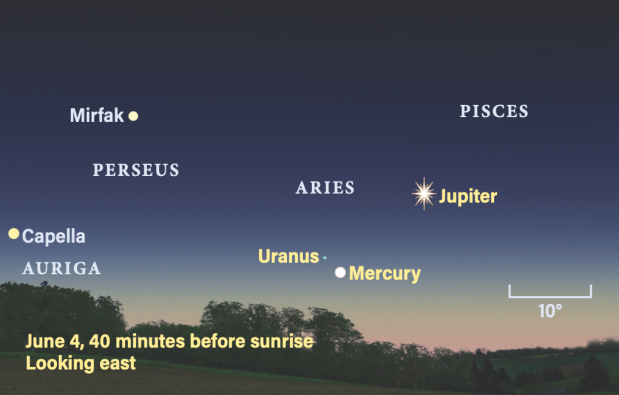
Challenge yourself to find Uranus with binoculars just before sunrise in early June. Though low, nɑƙeɗ-eye Mercury can point the way. Credit: Astronomy: Roen Kelly
Sunday, June 4The distant ice giant Uranus typically requires binoculars or a telescope to spot. This morning you can use brighter, nɑƙeɗ-eye Mercury to point the way, as the two planets lie within 3° of each other after Mercury passes 3° due south of Uranus at 1 A.M. EDT.
Some 40 minutes before sunrise, the pair is low on the eastern horizon. Mercury is just 4° high, with Uranus still to its north (upper left on the sky). The smaller, closer planet is brightening quickly, now magnitude 0.2 after starting the month 0.2 magnitude fainter. A clear eastern horizon will aid in identifying the bright morning star; once you’ve found it, use binoculars or a telescope to slide north and look for Uranus in the growing twilight. The earlier you look, the better, as the magnitude 5.9 ice giant will get harder to see as the sky lightens. Plus, you’ll want to put away any optics well before the Sun is due to rise from your location.
It can be quite interesting to compare the appearance of the two planets in your eyepiece. Mercury — much closer to Earth at 0.9 AU, is obviously the smaller of the two planets but appears 7″ across due to its proximity. Can you also tell that it is just 50 percent lit? Because it lies closer to the Sun than Earth, Mercury appears to go through phases as it orbits. By contrast, Uranus lies more than 20 AU away, appearing as a fully lit disk but spanning 3″, less than half of Mercury’s width. Uranus is, of course, much larger than Earth or Mercury, but its vast distance shrinks its apparent size in the sky.
Venus reaches greatest eastern elongation (45°) at 7 A.M. EDT. Now in Cancer in the evening sky, the bright planet will remain above the horizon some three hours after sunset. Through a telescope, its large, 24″-wide disk also appears half-lit.
Sunrise: 5:32 A.M.Sunset: 8:25 P.M.Moonrise: 9:39 P.M.Moonset: 5:34 A.M.Moon Phase: Waning gibbous (99%)
Monday, June 5The large, frigid moon Titan lies due north of Saturn this morning. You can find the ringed planet riding relatively high in the southeast a few hours before dawn, floating in the “watery” part of the sky in Aquarius.
Zoom in with a telescope and you’ll surely see 8th-magnitude Titan above the northern pole, though you may also catch a few fainter moons clustering near the rings as well. 10th-magnitude Tethys is almost due east of the rings, while Rhea lies to the southeast, close to the planet’s disk. Depending on what time you look, Dione may be located just west of Saturn’s northern regions — just before 5 A.M. EDT, this moon will disappear behind the planet, taking roughly 90 minutes to reappear. This occurs in daylight on the East Coast and shortly before sunrise in the Midwest. Observers farther west will have the best views of the moon’s reappearance.
Look also for the shadow of the planet obscuring the rings on the western side. This highlights the geometry of the solar system by showing where the Sun is in relation to the planet, based on how and where shadows fall. If you’re able to spot a dark gap in the rings themselves, that’s no shadow — it’s likely the large Cassini Division, which separates the outer A ring from the middle B ring closer to the planet. The A ring itself has a small, dark gap as well: the Encke Gap. It requires good seeing and decent magnification to spot.
Sunrise: 5:32 A.M.Sunset: 8:25 P.M.Moonrise: 10:43 P.M.Moonset: 6:30 A.M.Moon Phase: Waning gibbous (97%)
Tuesday, June 6Asteroid 11 Parthenope reaches opposition at 5 A.M. EDT. Although it’s visible all night, you’ll want to try spotting this space rock in Ophiuchus in the few hours between sunset and moonrise, after darkness has fallen but before the Moon’s bright light floods the sky.
At 9th magnitude, Parthenope is still within reach of binoculars, though a small scope may aid your search a bit better. After dark, look southeast, where the large circular constellation Ophiuchus stands. To its south (lower right) is Scorpius, whose bright red giant heart, Antares, should be easy to identify. From Antares, scan slowly northeast — Parthenope lies about 12° northeast of this star, or alternatively about 3° due west of 2nd-magitude Eta (η) Ophiuchi. Parthenope is just 35″northeast of a brighter 6th-magnitude field star.
The waning gibbous Moon reaches perigee, the closest point to Earth in its orbit, at 7:06 P.M. EDT. Our satellite will then stand 226,714 miles (364,861 kilometers) away.
Sunrise: 5:32 A.M.Sunset: 8:26 P.M.Moonrise: 11:38 P.M.Moonset: 7:38 A.M.Moon Phase: Waning gibbous (91%)
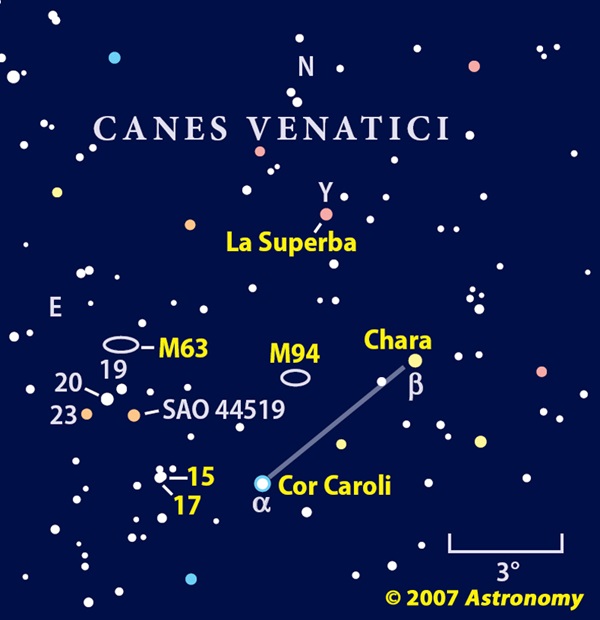
The Hunting Dogs won’t lead you astray if you are on the prowl for bright, nearby galaxies during a night of binocular observing. Credit: Astronomy: Roen Kelly
Wednesday, June 7Now that it’s June, let’s check out the American Association of Variable Star Observers’ (AAVSO) featured variable of the month: La Superba, The Magnificent. Cataloged as Y Canum Venaticorum and located in Canes Venatici the Hunting Dogs, this deep red star gains its hue from the plentiful carbon in its atmosphere. But that’s not its only quirk: Over the course of about 157 days, La Superba’s brightness changes by some 75 percent, swinging between magnitude 4.8 and 6.3. That means sometimes it’s readily visible to the nɑƙeɗ eye, while others it’s at the edge of visibility, particularly if there’s light pollution present.
You’ll find La Superba under the curve of the Big Dipper’s handle high in the north after sunset. It’s located 4.5° northeast of 4th-magnitude Chara (Beta [β] Canum Venaticorum) or just over 11° southwest of 2nd-magnitde Alkaid at the very end of the Big Dipper’s handle. If you can’t spot this ruddy sun by eye, binoculars or any small telescope will bring it into view.
Canes Venatici is a small and often overlooked constellation, but there’s plenty to see here. If you’re curious about what else it holds, check out Phil Harrington’s column on other treasures to observe within the Hunting Dogs.
Sunrise: 5:32 A.M.Sunset: 8:26 P.M.Moonrise: —Moonset: 8:54 A.M.Moon Phase: Waning gibbous (83%)
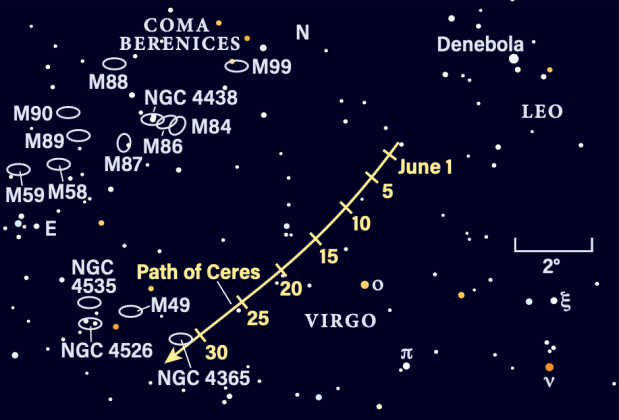
Ceres is traveling through Virgo, a constellation rich with galaxies. Only objects brighter than magnitude 10 are shown here. Credit: Astronomy: Roen Kelly
Thursday, June 8Dwarf planet 1 Ceres is traveling through an extragalactic haven, sliding near the well-known Virgo Cluster. To find the main-belt world, wait an hour or two after sunset and look for Leo the Lion, headed face-down toward the western horizon. The tip of the lion’s tail is 2nd-magnitude Denebola; Ceres lies just less than 5.5° to this star’s southeast. At 8th magnitude, you can capture this icy world in binoculars or any small scope, especially in the dark sky before the Moon has risen.
From Ceres’ location, it’s another short jump of about 6° northeast this time to M87, the giant elliptical galaxy at the heart of the Virgo Cluster. This galaxy is particularly famous, as its central black hole was the first such object ever imaged by the Event Horizon telescope. The galaxy itself shines at magnitude 8.6, easily captured in low-powered optics as a round fuzzball spanning about 7′. Because it’s an elliptical with no spiral structure, even bumping up the magnification won’t really change its appearance.
Nearby is a plethora of other galaxies — check out the chart above to view some of the brighter options on display, including Markarian’s Chain, a string of several galaxies that is a favorite of amateur observers.
Sunrise: 5:31 A.M.Sunset: 8:27 P.M.Moonrise: 12:20 A.M.Moonset: 10:11 A.M.Moon Phase: Waning gibbous (74%)
Friday, June 9The Moon continues to wane as it moves along the ecliptic, passing 3° south of Saturn at 4 P.M. EDT. The pair isn’t visible then — you’ll have to catch them in the early-morning sky before sunrise, when they are farther apart but both still sharing southern Aquarius.
An hour before sunrise, Saturn is more than 30° high in the southeast, with Luna floating some 8.5° south-southwest of the planet. Through a telescope, you’ll notice that Titan has moved far from its position earlier this week and now sits nearly 3′ from the planet, due east of the disk. You can also turn your telescope back to the Moon to explore the 66-percent-lit gibbous, focusing particularly on the terminator dividing lunar night from day. As the terminator sweeps across the surface, it swallows features in darkness and brings out stunning detail at the place where light and dark meet. Move your gaze up and down the terminator to explore the many craters and lava-filled plains.
Over in Aries above the eastern horizon, you can also spot Jupiter more than 10° high. All four of its Galilean moons appear around it this morning, with Europa (closest) and Ganymede to the west and Io and Callisto to the east. The positions of the latter two depend on when you look — for those on the East Coast, the planet rises with Callisto closer than Io. The two exchange positions just after 5 A.M. CDT (essentially the moment of sunrise on the East Coast, so your optics should be put away!), when Callisto is due north of Io. After that, Callisto moves farther away, while Io sits closer to the planet.
Sunrise: 5:31 A.M.Sunset: 8:28 P.M.Moonrise: 12:55 A.M.Moonset: 11:28 A.M.Moon Phase: Waning gibbous (63%)





